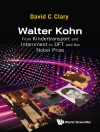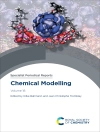This volume contains a representative selection of papers presented at the Tenth European Workshop on Quantum Systems in Chemistry and Physics (QSCP-X), held at Beït al-Hikma, seat of the Académie Tunisienne des Sciences, des Arts et des Lettres, in Carthage, Tunisia, September 1-7, 2005. About 90 scientists from 18 countries, half of them from North Africa, attended the meeting, which foc- sed on the evolution of current issues and problems in methods and applications. This workshop continued the series that was established by Roy Mc Weeny near Pisa (Italy), in April 1996, then continued on a yearly basis: Oxford (1997), Granada (1998), Paris (1999), Uppsala (2000), Sofia (2001), Bratislava (2002), Athens (2003), Grenoble (2004) …. The purpose of QSCP workshops is to bring together chemists and physicists with a common field of interest – the quantum mechanical theory of the many-body problem – and foster collaboration at the fundamental level of innovative theory and conceptual development. Quantum mechanics provides a theoretical foundation for our understanding of the str- ture and properties of atoms, molecules and the solid state in terms of their c- ponent particles, electrons and nuclei. The study of ‘Quantum Systems in Ch- istry and Physics’ therefore underpins many of the emerging fields in science and technology: nanostructures, smart materials, drug design, and so on. The tenth workshop was the first in the series held outside Europe.
Inhoudsopgave
Advanced Methodologies.- Literate many-body perturbation theory programming: Third-order“ring” diagrams.- Multicomponent many-body perturbation theory for the simultaneous description of electronic and nuclear motion: Towards a practical implementation using literate programming methods.- Renormalized coupled-cluster methods: Theoretical foundations and application to the potential function of water.- Hyperspherical and related types of coordinates for the dynamical treatment of three-body systems.- On the time-dependent solutions of the Schrödinger equation.- Interactions and Clusters.- An improved 6-D potential energy surface for ammonia.- A review on gold–ammonia bonding patterns.- Potential energy surfaces and dynamics of He n Br2 van der Waals complexes.- Theoretical treatment of charge transfer processes: From ion/atom to ion/biomolecule interactions.- Excited States and Condensed Matter.- Shell effects and homothetic expressions for electron relaxation and other corrections to 2p-core ionization energies and spin-orbit splitting for atoms from Cl to Ba.- On the role of electronic molecular states of high spin multiplicity.- Ab initio characterization of electronically excited metastable states of S2 -.- An extensive study of the prototypical highly silicon doped heterofullerene C30Si30.- Theoretical study of the magnetism in molecular crystals using a first-principles bottom-up methodol.












